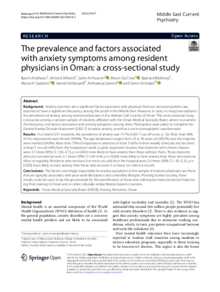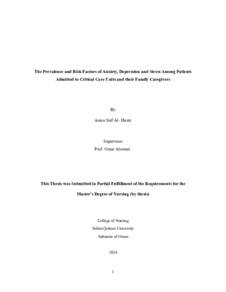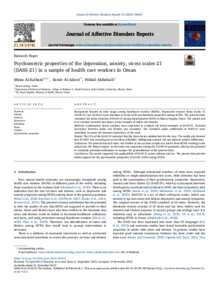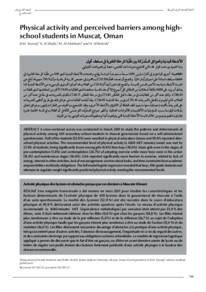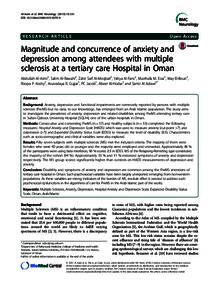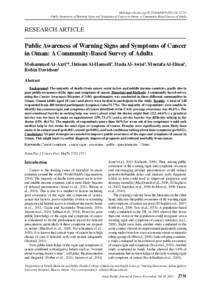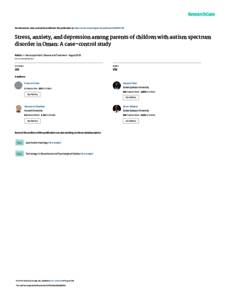Document
The prevalence and factors associated with anxiety symptoms among resident physicians in Oman : a cross-sectional study.
Identifier
DOI: 10.1186/s43045-022-00214-z
Source
Middle East Current Psychiatry. v. 29, 1, p. 47
Contributors
Al-Kamli, Ahmed., Author
Al‑Huseini, Salim., Author
Chan, Moon Fai., Author
Al-Mahroqiyah, Badria., Author
Al-Saadoon, Muna., Author
Ambusaidiyah, Aamal., Author
Ganesh, Aishwarya., Author
Al‑Adawi, Samir., Author
Country
Germany.
Publisher
Springer Science and Business Media Deutschland GmbH.
Gregorian
2022-12-01
Language
English
Subject
English abstract
Background: Anxiety disorders are a significant factor associated with physician burnout and poor patient care, reported to have a significant frequency among the youth in the Middle East. However, to date, no study has explored the prevalence of anxiety among resident physicians in the Arabian Gulf country of Oman. This cross-sectional study, conducted among a random sample of residents affiliated with the Oman Medical Specialty Board, aimed to examine the frequency and factors associated with anxiety symptoms among them. Participants were asked to complete the General Anxiety Disorder Assessment (GAD-7) to assess anxiety, as well as a socio-demographic questionnaire. Results: In a total of 251 residents, the prevalence of anxiety was 14.7% (GAD-7 cut-off score ≥ 10). More than 60% of the respondents were female (68.9%). The age breakdown ranged from 25 to 30 years old (66.5%) and the majority were married (64.9%). More than 70% of respondents attended at least 5 shifts in their weekly schedule and received at least 5 on-call shifts from the hospital per week. Logistic regression showed that residents with chronic disease were 2.5 times (95% CI 1.36–4.72, p = 0.003) more likely to have anxiety than those without them. Those residents who did not exercise were 2.1 times (95% CI 1.04–4.46, p = 0.038) more likely to have anxiety than those who exercise often or regularly. Residents who received 6 or more on-calls from the hospital were 2.6 times (95% CI 1.35–5.25, p = 0.005) more likely to have anxiety than those who received 5 or fewer on-calls in a month. Conclusions: The factors seemingly responsible for anxiety symptoms in this sample of resident physicians are those that are typically associated with poor work-life balance and unhealthy lifestyles. Pending further scrutiny, these results could be used to lay the groundwork for the identification of those who will require more protracted help during their training in Oman and in other culturally similar Middle Eastern countries.
ISSN
2090-5408
Category
Journal articles

